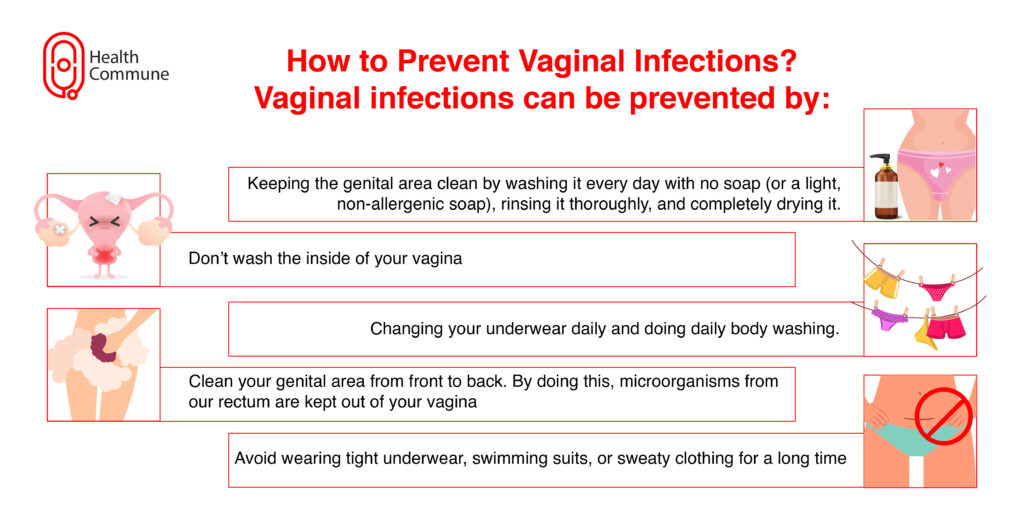Vaginal discharge is normal, typical, and unproblematic for most women. However, in the case of some underlying condition, you may notice a change in colour, texture, smell, or amount. In this article, you’ll learn about normal and abnormal vaginal discharge, types of abnormal discharge, its causes, diagnosis, and treatment.
What is a vaginal discharge?
Vaginal discharge is a clear or off-white fluid that leaks from your vagina. It is produced by your uterus, cervix, and vagina and is mostly made up of cells and bacteria. It aids in lubricating and cleaning your vagina, as well as preventing infections and harmful bacteria from entering your body.
Is vaginal discharge normal?
Vaginal discharge is a typical and natural process; however, changes to your discharge could indicate an infection or illness.
What does a woman's vaginal discharge colour indicate?
Your vaginal discharge’s colour is an important factor in determining the underlying condition.
- Clear or white: Normal vaginal discharge is usually clear, white, or off-white. You might have a yeast infection if your discharge is white and thick, resembles cottage cheese, and is accompanied by itching.
- Yellow, grey or green: These suggest a bacterial or sexually transmitted disease
- Brown or red: This may be an indication of irregular menstruation or pregnancy

What are the causes of vaginal discharge?
Abnormal vaginal discharge is mostly caused by infections. The most common infections include:
- Yeast infections: When fungus (usually candida) overgrows in your vagina, vaginal yeast infections take place. It leads to a vaginal discharge that is thick, white, and resembles ‘cottage cheese’. Other symptoms include vaginal swelling, itching, and pain during intercourse. Antifungal agents are used for treatment
- Trichomoniasis: Sexual contact with an infected individual leads to an infection called trichomoniasis, which is caused by a parasite. The discharge appears bubbly or foamy and turns green, yellow, or grey. Antibiotics are used in their treatment
- Bacterial vaginosis: When there is an overgrowth of the usual vaginal bacteria, it leads to an imbalance, causing a fishy-smelling, white or grey vaginal discharge. It can be treated with antibiotics
- Chlamydia and Gonorrhoea: These infections are caused by having sexual intercourse with an infected person. They lead to a hazy, yellow, or green vaginal discharge. Antibiotics are the treatment of choice. If the infection is not treated, it could progress and result in complications like pelvic inflammatory disease and infertility
Other factors contributing to abnormal vaginal discharge include:
- Atrophic vaginitis: this condition usually happens after menopause when there is a decrease in estrogen which cause the vagina to become dry and thinner
- Excessive use of detergents, soaps, sexual lubricants, or materials used in condoms or sex toys
- A foreign body in the vagina (like a forgotten tampon)
- Cross-contamination with urine or stools
- Pregnancy: During pregnancy, your discharge increases to protect you from infections
- Ovulation: During ovulation, your discharge becomes wet and slippery so that it is easier for the sperm to reach the egg for fertilisation
- Malignancies in the genital tract
What are the risk factors for vaginal infections?
You are at a greater risk of vaginal infection if you are :
- Suffering from uncontrolled diabetes
- Having intercourse without protection or with numerous partners
- Using scented soaps and detergents for cleaning your vagina
- Taking birth control pills
- Having an HIV infection or being immunocompromised
When are the symptoms of abnormal vaginal discharge?
When you experience the following symptoms, it indicates abnormal vaginal discharge:
- Changes in your normal vaginal discharge
- Bad or fishy odour
- Pus-like or cottage cheese-like discharge
- Itching in the vagina
- Swelling
- Pain in the pelvic area, especially when you urinate
- Spotting after having sex
- Burning sensation during urination
How is vaginal discharge evaluated?
Your doctor will take a detailed history of your symptoms and recommend the below tests:
- Pelvic exam: This test is usually done to look for discharge, tenderness, and the presence of foreign bodies or any anomalies in the tissue and organs. Your doctor examines the vagina and cervix with a speculum
- Wet mount: This test looks for yeast, bacterial, or trichomoniasis infection in a sample of discharge
- Potassium hydroxide (KOH) test: This can be either to detect bacterial vaginosis (‘Whiff’ test: A drop of vaginal discharge is mixed with KOH; a fishy odour indicates the presence of bacterial vaginosis) or for detecting candida infections (the vaginal discharge is mixed with a solution of KOH and examined under the microscope to check for the presence of candida)
- STI (sexually transmitted infections) screening: These are done to detect sexually transmitted infections and check for gonorrhoea, chlamydia, trichomoniasis, syphilis, or other organisms
- HIV screening: This is used to detect the presence of HIV infection
- Pap smear: This is done in case of suspected malignancies. It is a cervical cancer screening procedure
- Blood test, culture and sensitivity: In case pelvic inflammatory disease is suspected. This is helpful in diagnosing the underlying cause of infection
What are the treatment options for an abnormal vaginal discharge?
Treatment is based on the underlying cause of the discharge:
- Antibiotic medications are used to treat infections. Uncomplicated infections such as bacterial vaginosis require an oral and topical course of metronidazole for a week, while more complicated conditions like pelvic inflammatory disease require stronger antibiotics. which may be prescribed through the oral or intravenous route
- Vaginal creams that contain estrogen as an ingredient to treat vaginitis due to menopause
- In the case of cervical cancer, appropriate treatment is given
How can I prevent infections?
Vaginal infections can be prevented by:
- Keeping the genital area clean by washing it every day with no soap (or a light, non-allergenic soap), rinsing it thoroughly, and completely drying it.
- Don’t wash the inside of your vagina
- Changing your underwear daily and doing daily body washing.
- Clean your genital area from front to back. By doing this, microorganisms from your rectum are kept out of your vagina
- Avoid wearing tight underwear, swimming suits, or sweaty clothing for a long time
What are the complications of vaginal discharge?
If the discharge caused by infections is left untreated this may lead to many complications:
- An increased risk of sexually transmitted diseases is present if the discharge is caused by bacterial vaginosis or trichomoniasis
- Premature births and low birth weight have been associated with symptomatic bacterial vaginosis and trichomoniasis during pregnancy
- Sexually transmitted diseases lead to pelvic inflammatory disease (an infection of the uterus, fallopian tubes, ovaries, and other reproductive organs that leads to permanent damage), which in turn causes ectopic pregnancy (when a fertilised egg gets implanted outside the uterus, it is called an ectopic pregnancy).
Why do I constantly get a vaginal discharge?
A small amount of discharge in a day is typical, as it’s your body’s way of keeping your vagina healthy and clean. In cases of excessive irritation, using a pantyliner is useful. If there is any change in your vaginal discharge, consult your doctor.





